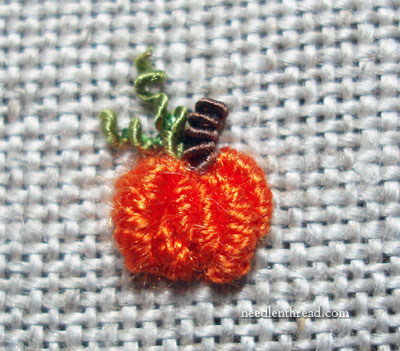October 18, 2012
Dissecting Goldwork & Silk Embroidery – Gently!
Last week, we took a glance at an old fragment of goldwork and silk embroidery. As promised, we’re going to look at it a bit closer today.
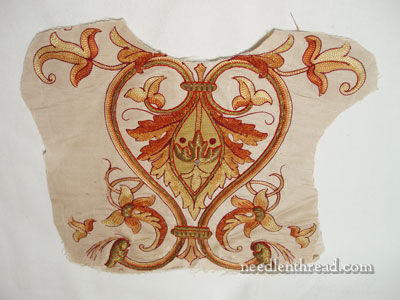
October 18, 2012
Last week, we took a glance at an old fragment of goldwork and silk embroidery. As promised, we’re going to look at it a bit closer today.

October 17, 2012
Today, thanks to Country Bumpkin, I’m giving away two 2013 William Morris Appliqué calendars.
For those of you who like quilts, who like Things-Morris, who are into textiles – you’ll love this calendar decorated with beautiful pictures from the William Morris in Appliqué collection from Michele Hill’s William Morris in Appliqué books.
It’s the perfect calendar to hang in your sewing area, or anywhere else for that matter!
Comments are closed for this give-away! Thanks for participating!
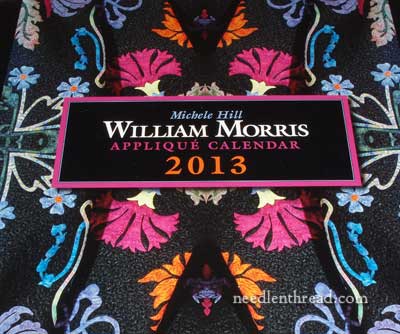
October 16, 2012
Over the centuries, silk thread has been particularly favored for fine embroidery for a number of reasons, but the dominant reason is this: it is a naturally beautiful thread. No other fiber compares to silk for its natural, age-defying beauty.
Most cotton embroidery threads have a sheen to them. But under the glaring eye of Time, that sheen – which is chemically produced through a process called mercerization – fades. Not so with silk!
The natural sheen of silk is especially beautiful because of the way light plays off it. I’ll show you what I mean, while we chat about a project I’m working on.
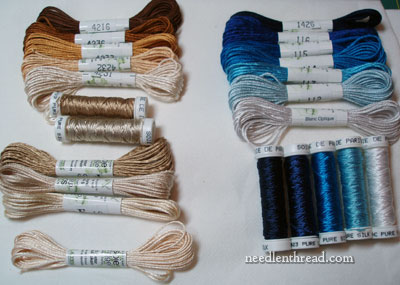
October 15, 2012
When I think of Hungarian embroidery, I generally think of bright, multi-colored embroidery. From region to region in Hungary, though, different styles of embroidery dominate. Some of it is multi-colored and bright. Some of it is whitework. As with many countries that have a needlework heritage, there are many different styles of embroidery in Hungary.
My favorite type of embroidery from Hungary is a kind of “peasant” embroidery, worked in red, red and blue, or red and black, on heavy, coarse linen. I’m calling it Hungarian redwork, because really, that’s what it is – it is often all-red embroidery, worked heavily in a combination of buttonhole stitch, a kind of closely worked open chain stitch, some satin stitch, and sometimes other stitches, too.
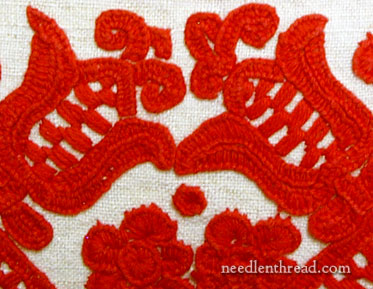
October 13, 2012
If you enjoy blackwork – or if you haven’t tried it but are keen to – here’s a wonderful online resource for an extensive collection of blackwork filling patterns – and it’s free!
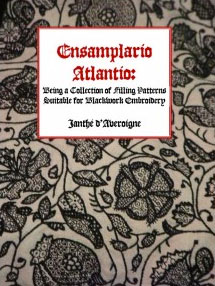
October 12, 2012
Over the last few months, we’ve looked at some pieces of old embroidery featuring silk and goldwork. The three pieces we’ve examined so far (this example of Chinese embroidery, this gorgeous tambour and goldwork embroidery panel, and this goldwork and silk on velvet piece) are all in fairly good condition for what they are.
Today, I’m going to show you another old fragment featuring silk tambour embroidery and metal threads.
It’s not the most beautiful piece of embroidery you’ll ever clap your eyes on. In fact, as far as my preferences go, I’d say it’s a bit on the ugly side, the poor thing.
There are some intriguing things about the fragment as well, though, and the whole thing begs to be examined more closely. But let’s start with a brief look.
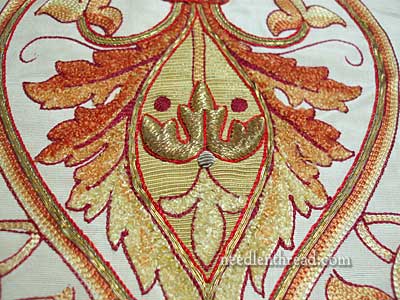
October 11, 2012
I don’t know why I did it. Perhaps it’s because I couldn’t get over the orange kick, after playing with orange Trebizond silk and plaited braid stitch. (Remember that? I’m not really an orange person!)
More likely, though, it’s because everywhere I look right now, someone is proffering the latest Pumpkin-Something, and I am beginning to feel Oddly Short of Mainstream. To solve the problem, yesterday I took five minutes out of my already off-course day and fiddled with orange thread to create a pumpkin.
If you want to add a of Petite Pinch of Popular Pumpkin to your embroidery, here’s an easy and quick way to do that!
